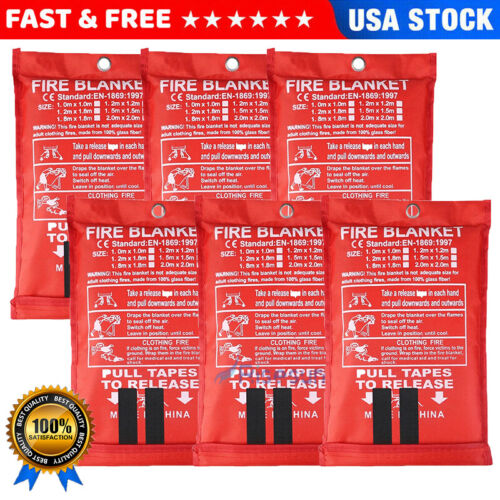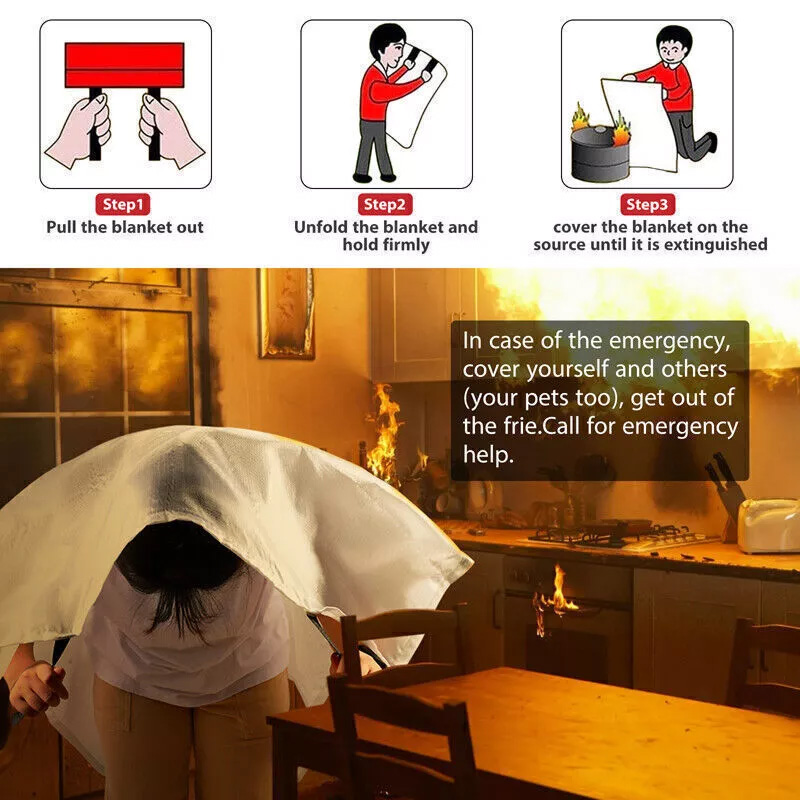Fire Resistant Emergency Blanket: Your Ultimate Safety Companion
A fire resistant emergency blanket is a must-have safety tool that can save lives during fire emergencies. This guide explains its uses, benefits, and how to choose the right one for your needs.
What Is a Fire Resistant Emergency Blanket?

A fire resistant emergency blanket is a specially designed safety device made from flame-retardant materials. Unlike regular blankets, it can withstand high temperatures and smother small fires. You'll typically find these blankets in bright colors (often orange or silver) for easy identification during emergencies.
These blankets work by cutting off oxygen supply to flames, effectively putting out small fires before they spread. They're lightweight (usually under 2 pounds) and compact enough to store in kitchens, cars, or emergency kits.
Key Benefits of Owning a Fire Resistant Emergency Blanket
1. Immediate fire suppression: You can use it to smother small fires on clothing, cooking oils, or electrical equipment within seconds.
2. Personal protection: Wrap it around yourself or others to escape through flames safely.
3. Versatility: Many models double as emergency shelters or signal devices in outdoor situations.
4. No maintenance required: Unlike fire extinguishers, these blankets don't need recharging or regular inspections.
5. Reusable: Most quality blankets can be used multiple times if properly cleaned after each use.
How to Use Your Fire Resistant Emergency Blanket Properly
When facing a small fire:
- Pull the blanket quickly from its storage pouch
- Hold the blanket by the corners with your hands protected behind it
- Approach the fire cautiously from upwind if possible
- Cover the flames completely, leaving no gaps
- Leave the blanket in place for at least 15 minutes to ensure the fire is out
Remember: Never use water on grease fires - your fire resistant emergency blanket is the safer choice. For larger fires, evacuate immediately and call emergency services.
Choosing the Right Fire Resistant Emergency Blanket
Look for these features when selecting your blanket:
- Material: Fiberglass or specially treated wool blends offer the best protection
- Size: Standard sizes range from 3x4 feet to 6x8 feet - larger blankets cover more area
- Certifications: Check for UL, CE, or EN certifications for guaranteed performance
- Storage: Choose a model with a quick-release pouch for fast access
- Durability: Reinforced edges and heat-resistant stitching increase longevity
Where to Keep Your Fire Resistant Emergency Blanket
Strategic placement ensures quick access during emergencies:
Kitchen: Mount near the stove but not directly above heat sources
Garage/Workshop: Protect against electrical or chemical fires
Bedroom: Keep one folded under your bed for nighttime emergencies
Car: Store in your trunk or behind the driver's seat
RV/Camper: Essential for mobile living spaces
Maintenance and Care Tips
To ensure your fire resistant emergency blanket remains effective:
- Inspect annually for tears or damage
- Refold periodically to prevent permanent creases
- Clean only according to manufacturer instructions (typically gentle hand washing)
- Replace if used in an actual fire or if material becomes brittle
Fire Resistant Emergency Blanket vs. Fire Extinguisher
While both are valuable, your fire resistant emergency blanket offers unique advantages:
| Feature | Fire Blanket | Fire Extinguisher |
|---|---|---|
| Ease of Use | Simple deployment | Requires training |
| Maintenance | None required | Annual inspections |
| Best For | Small contained fires | Larger spreading fires |
For complete protection, experts recommend having both in your home.
Final Thoughts
A fire resistant emergency blanket is one of the simplest yet most effective safety investments you can make. Affordable, easy to use, and maintenance-free, it provides peace of mind against one of the most common household emergencies. Choose a quality blanket today and store it properly - it might just save your life tomorrow.
Remember: No safety device replaces common sense and fire prevention measures. Always practice fire safety habits alongside having emergency equipment.






